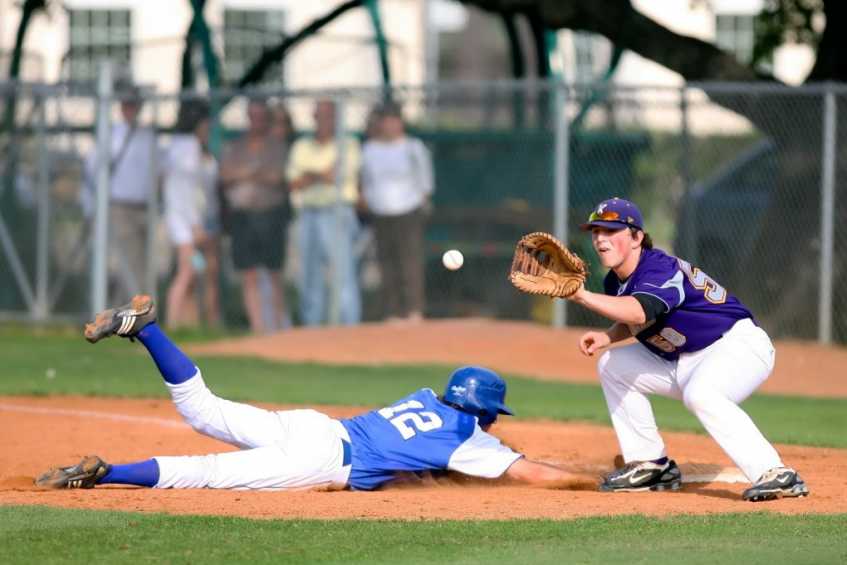
Do not get fooled by baseball people when they say baseball pitching is not about the radar gun and throwing faster. Maybe that is unfortunate but speed matters, big time. For dads and coaches who want pitchers to reach their potential, they should do all they can to help them throw faster. Many people bash the radar gun use, believing the reliance on it has hurt baseball. I understand their position. But for elite players, who have eyes towards major college baseball and beyond, the radar gun is crucial. When talking about baseball player development, it helps when people define their audience.
At first I believed this article was for the elite coaches and parents of young players with a possible big future. But, then I realized it applied to all levels, just to a lesser extent. Pitching is about speed, and that is the case at all levels and in fast pitch softball, too. Every mile per hour a pitcher throws faster is huge. Proof comes every year at the major league level. A once dominating pitcher drops just a couple of miles per hour, and they become an average pitcher. When batters can wait extra fractions of seconds longer, it is a tremendous advantage.
Other pitching factors as speed changes become less intimidating. That fact does not change at any level. Sure players may be able to get by up to a certain level with guile, but not at elite levels of baseball. Throwing a few miles per hour advances players' careers. Soft throwers usually go home. Yes, there are other ways to get players out besides just throwing hard, but that is only up until a higher level.
Pitchers who throw an average fastball below 90 at the major league levels are becoming extinct for a reason. They have so much less room for error than the hard throwers. For every Mark Buehrle, throwing mid 80's on the radar gun, hundreds of big league pitchers throw in the 90 and above range. Even Buerhle threw much harder earlier in his career. If he threw his current speed back in his younger days, his opportunity to be one of the greatest pitchers of this generation evaporates.
In this pursuit of speed, Tommy John surgeries are spiking too. It's the nature of the beast so to speak throw harder, have a possible big future, throw harder, risk arm injury. Players may avoid injuries with proper pitching mechanics and acute coaching supervision. Physical training and solid youth pitching drills help, too. But they still will have trouble having the future they are looking for without extra miles per hour. It's a dangerous but necessary trade-off.
Nothing above implies that other factors as movement, location and change of speeds are not crucial to pitching success. But, a big-time baseball pitching future comes to those who throw the hardest.
At the youngest levels of baseball, kids get selected as pitchers based on how strong their arm is. The faster they throw, the more the ball stays on a straight line, usually leading to more strikes. More athletic players throw harder, and that talent often makes it easier when learning how to pitch a baseball. For right or wrong, even when the hard throwers cannot pitch strikes, coaches continue to groom them to be pitchers. The radar gun factor determines which pitchers make the high school team. Pitchers have little time to state their case in a short tryout, so coaches go by the radar gun for choosing their pitchers. Beyond high school, throwing high seventies to low eighties may lead to the division three level college. And that is for the few lucky ones at that. Most pitchers throwing those speeds see their careers end before college. Mid to upper eighties and higher are the only players with a decent chance of pitching beyond college. In conclusion, players who throw the hardest are the pitchers, and that does not change at any level of baseball. At the end of the day, injuries, especially career ending ones are unfortunate, but speed matters.
After playing major league baseball, Jack Perconte has taught baseball and softball since 1988 and offered valuable coaching training too. He has helped numerous youth players reach their potential, as well as having helped parents and coaches navigate their way through the challenging world of youth sports. Jack is one of the leading authorities in the areas of youth baseball training and coaching training advice.
All Jack Perconte articles are used with copyright permission.There are 0 comments on "Pitching Don't be Fooled, it's all about the Radar Gun"
chandler allen says:
"Hi my name is chandler, i’ve enjoyed..."
On Wanting to tryout for summer ball. as an 18 year old
david graham says:
"With no current MLB team in Canada,..."
On With no current MLB team in
Charles Chavez says:
"To All Coaches: Do you have13U or..."
On Looking for Games